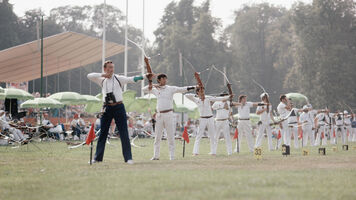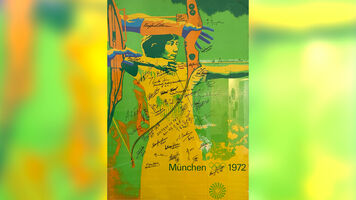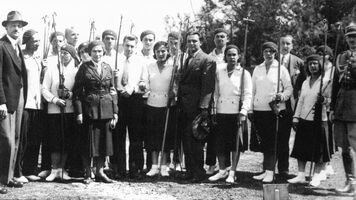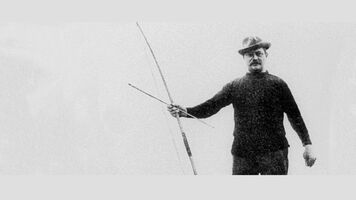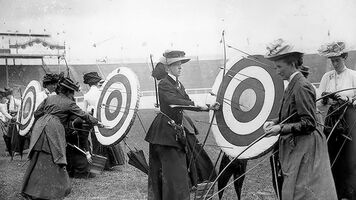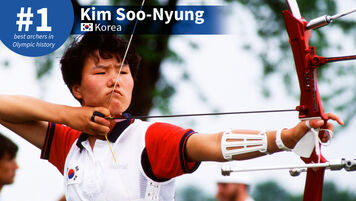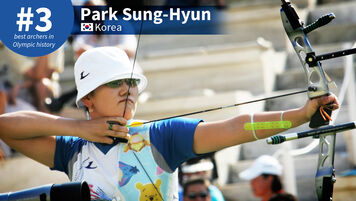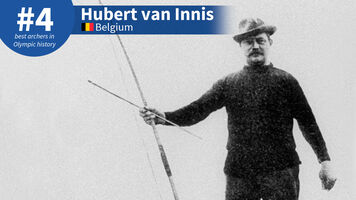Kyudo, the way of the bow and the pursuit of Zen in archery
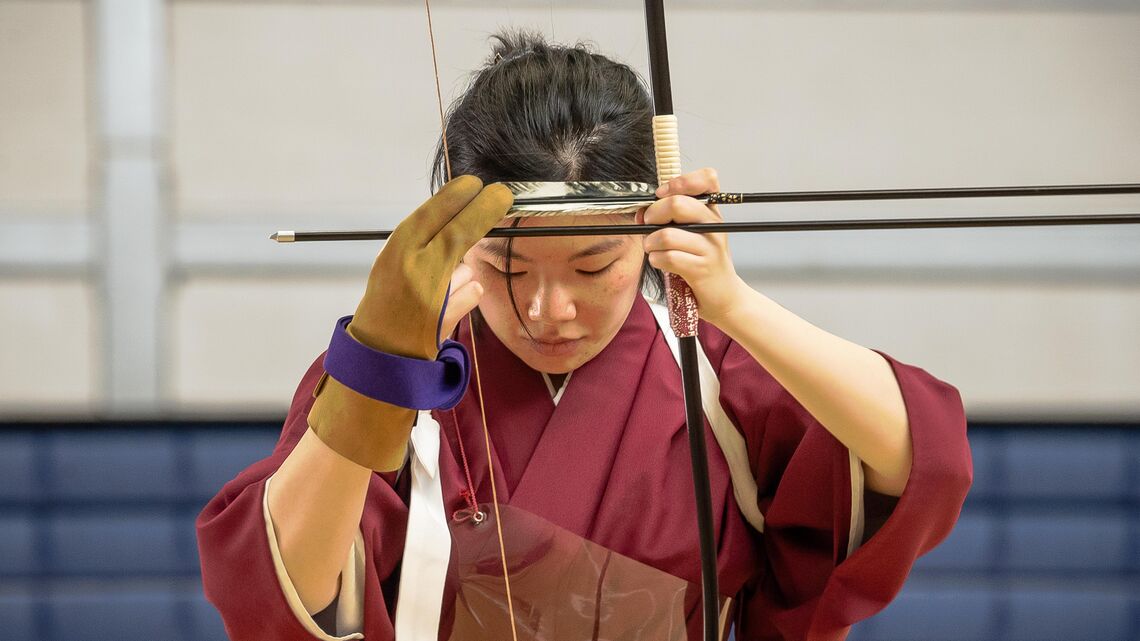
"When we face the target, it is like a mirror that reflects our heart. We must confront ourselves in this mirror.” – Takeuchi Masakuni
Few archery traditions take hold of the imagination like kyudo.
The drawing of the bow and the skill of individual archers have been romanticised throughout history. But to watch kyudo for yourself is to witness a sport embodying unsurpassed elegance and ritual. What on the surface seems to be an essential simplicity is anything but.
It is also one of the more distinctively Japanese cultural expressions, a mark of a society closed off for hundreds of years. The image of formal kyudoka, with their long asymmetric bows in a bare hall, is one of the most iconic martial arts traditions.
On a kyudo range, nothing – from the way you pick up your arrows to shoot, to the way you pull them from the target – is by chance. Nothing. Everything is carefully delineated, with each element of the shot – nocking, setting up, drawing and releasing – having multiple elements, each with a distinct name in Japanese.
Watching kyudo, even just on YouTube, gives you a sense of the depth of the process and the difficulty required to master the art.
Kyudo (pronounced “cue-dough”) literally means, “the way of the bow”. Older military traditions in Japan were called kyujitsu, which means something closer to “skill with the bow”, the jitsu part giving a fighting context.
It is a martial art in the distinctly East Asian sense, and it is best seen alongside the better-known Japanese combat sports like judo and karate. While it draws from feudal and samurai roots, kyudo, as practised now, is only a few 100 years old.
Today, many archers practise kyudo as a sport, with accuracy being paramount. However, the goal of most kyudokas is seisha seichu: “Correct shooting is correct hitting”.
The form is the essential element; unlike the more flexible forms of archery, kyudo is formalised into distinct steps that must be followed in a precise and distinct order. However, the forms are not entirely immovable, and modern kyudo worldwide broadly follows three different schools, each one emphasising different aspects of the art.
The version best known outside of Japan is seitei or “sport” kyudo: the basic form pulling elements from all the schools, and more grade-oriented and geared to competition. According to the Nippon Kyūdō Federation, the supreme goal of kyudo is achieving a state of shin-zen-bi, which roughly translates as “truth-goodness-beauty”.
The idea is that when archers shoot correctly, with “truth,” good spirit and attitude, beautiful shooting will naturally follow. (This idea, removed from a spiritual context, is present in modern competition archery traditions, too.)
It is not enough just to shoot accurately; the shot must be made with the utmost sincerity and commitment, to manifest a hidden power.

Another key difference between kyudo and competition archery is the commitment to a club and practising in a group. The very experienced can practice at home or on other ranges, but kyudo is very much a collective discipline: a display for an audience – both for your club mates, so that they can learn, and your peers, so that you might be assessed.
Archers often shoot in groups of three shot in a set order: the second-most experienced leading off, the least experienced in the middle and the most experienced shooting last.
This is similar to how World Archery competition teams plan their shooting order, and the reasons are essentially the same: to inspire confidence in the team, inspire the least experienced to shoot well and to anchor the team with a final strong performance. A wave of confidence will ripple across the three archers.
Equipment
Most kyudo equipment is sourced directly from Japan. The most distinctive item is the asymmetric yumi bow, usually taller than the archer, and the best of which are made of bamboo.
Like most East Asian arrows, kyudo ya are traditionally made from bamboo, although many now train with carbon arrows (indeed, many kyudo clubs now use Easton shafts) with bird feather fletchings.

Uniquely, kyudo arrows are prepared and shot in pairs; the haya and otoya using feathers from different sides of the bird: the haya is supposed to spin clockwise, and the otoya anticlockwise. This is supposed to stop the arrows landing in exactly the same position on the target.
Apart from the mandatory clothes and the bow, the most distinctive feature of kyudo is the glove, known as the yugake, which the archer uses to give the string a distinct twist when drawing. A top-level, handmade yugake can cost more than 1200 USD.
Kyudo around the world
Of all the Japanese martial arts, kyudo is relatively little known outside of Japan – certainly compared to combat forms like judo and karate. It gradually expanded after the second world war to a few other countries around the world. Not all countries have a national federation and some international clubs receive instruction and tuition directly from Japan.
Success in kyudo is found down two paths: tournaments, which emphasise scores, and grade examinations, which test technique and proper form.
Grading might happen once or twice a year, and there is a programme of competitions and events around the world.
Depending on your level, hitting the target may not be an essential component of moving up a grade, in a discipline where form is more important. You could say that the hit is part of it, but perhaps not all of it.
There is a performative aspect to kyudo; while good arrow flight and speed is essential, part of achieving mastery of the sport is a subtle level of personal expression. Kyudo, as taught in high schools across Japan, tends to emphasise the sporting side. At the higher levels, and in top international clubs, it emphasises the mastery of the form.

Many cursory studies of kyudo focus on the spiritual aspect of the sport, with that element being more important than hitting the target. This is partly since the publication of the 1948 book Zen In The Art Of Archery, by the German academic Eugene Herrigal, who studied in Japan with a kyudo master.
(Herrigal’s book is by far the best-selling book of all time with the word archery in the title, although it is really a classic interpretation of Zen Buddhism, using kyudo as a vehicle.)
Japanese archery is ultimately syncretic and pulls from multiple philosophical and religious traditions: the association with the sacred peculiar to Shinto, the traditions of Chinese civil archery and the moral self-improvement of Confucianism, the cosmology of Daoism, the spiritual development of Buddhism and the mental practice to achieve concrete results on the target from Zen.
(Confucius, the philosopher whose influence still dominates East Asian culture described the bow as a “vessel of virtue”.)
However, because of Herrigal’s book, which only became influential in Japan once it was published there, many people associate kyudo solely with the practice of Zen.
This aspect is not usually taught directly. Kyudo is first and foremost about archery. Although, you may be lucky enough to find enlightenment along the way.
The dizzying levels of commitment to approach mastery, perhaps even more than other Japanese martial arts, mean that kyudo is a lifetime study for most. Once you are hooked, it may be part of you forever.

